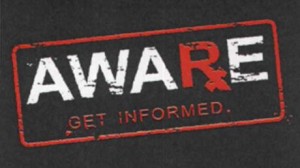 Protect Those in Your Care from Prescription Drug Misuse and Abuse
Protect Those in Your Care from Prescription Drug Misuse and Abuse
Move Your Medications, and Create a Prescription Drug Safety Plan for the New Year
This holiday season the AWARxE Consumer Protection Program encourages you to securely store medications to protect family, friends, and those in your care from accidental ingestion and prescription drug misuse and abuse. AWARxE also encourages you to use the guidelines below to create your own prescription drug safety resolutions for the New Year.
With the holidays bringing family, friends, and other guests together, ensuring secure storage of needed medications is vital to protecting all visitors from misuse, abuse, and accidental ingestion. Leaving medications in the medicine cabinet, out on counters, or in other easily accessible areas can put young children and those you care for at risk for accidental ingestion.
Securely storing medications out of sight and reach will protect those in your care from accidentally taking the wrong or too much medication. Locking medications in a cupboard or a medicine safe, or storing them in a linen closet or dresser drawer – if these are secure and out of reach – are options to consider. Both prescription drugs and OTC drugs should be securely stored.
Also, if you are hosting an event, you may wish to remind guests to keep purses, bags, or coats that have medicines in them out of sight and out of reach of children when they are in your home. Consider providing guests with a secure place to store these items. And if you are the guest, consider asking for a secure place to store your belongings, especially if you know young children will be attending the celebration.
Prescription Drug Safety in the New Year
In addition to implementing these steps to protect loved ones from misuse and abuse, AWARxE encourages you to create prescription drug safety goals for the New Year.
Below are a few guidelines to consider.
1. Dispose of unneeded, unused medications at a medication drop box site.
Taking a few minutes to collect the unneeded medications from your home and dispose of them at a nearby collection site may prevent a medication injury or even save a life.
Prescription drug abuse has reached epidemic proportions across the country and touches all generations. In fact, in 2012, 6.8 million people aged 12 or older abused prescription drugs, according to the Substance Abuse and Mental Health Services Administration, a government agency that conducts a national survey on related topics each year. The same survey has shown over the last few years, that over 50% of people abusing these drugs got them from friends or family for free. Often those who abuse drugs, including teens, take them right of the medicine cabinet.
Ridding the home of unused, expired, or unneeded medications,
helps to prevent the drugs from falling into the wrong hands.
 The Find Disposal Sites on the NABP / AWARxE Website [7/8/2024 TCV Updated URL] provides medication disposal drop box locations in every state. Police stations may accept controlled substance prescription drugs (such as certain pain medications), and community and pharmacy drop box programs may accept all other drugs. Use the information at the above link, to contact the medication collection program near you for details and hours of operation.
The Find Disposal Sites on the NABP / AWARxE Website [7/8/2024 TCV Updated URL] provides medication disposal drop box locations in every state. Police stations may accept controlled substance prescription drugs (such as certain pain medications), and community and pharmacy drop box programs may accept all other drugs. Use the information at the above link, to contact the medication collection program near you for details and hours of operation.
2. Be sure to ask your pharmacist any questions you have about current or new prescriptions, and over-the-counter (OTC) products.
Your pharmacist can answer questions about how to take the medication correctly, what to expect, and any side effects. If you are choosing an OTC product, a pharmacist can also review your current prescriptions to help you avoid any drug-related interactions.
3. Educate others about the importance of medication storage and disposal, and about misuse and abuse dangers.
You may wish to explain the importance of secure storage to those in your care, as well as providing tips for safe medication usage. List of medication tips – 2-page PDF document [TCV Update 10/25/2022: URL not found]
4. Create a list of all your medications, and medication lists for those in your care.
Carry the list(s) with you at all times. In an emergency, the list(s) will assist health care providers with appropriate treatment and help ensure continuation of regular medications, while preventing adverse drug interactions. You can also provide the list(s) to your (your loved one’s) doctors and pharmacist to help those providing treatment and dispensing medications with up-to-date patient data.
For additional information, visit the Substance Abuse and Mental Health Services Administration link at: “Results from the 2012 National Survey on Drug Use and Health” (September 2013). [Update 10/19/2017: Link no longer available]
CARMEN A. CATIZONE, MS, RPh, DPh, is the Executive Director of the National Association of Boards of Pharmacy® (NABP®) and the Secretary of the Association’s Executive Committee. He serves as a Governor of the Pharmacy Technician Certification Board (PTCB) Board of Directors and Chair of the PTCB Certification Council. He has acted as a reviewer on several advisory boards and has provided expert witness testimony and consultation in the areas of pharmacy practice and regulation.
AWARxE® is a consumer protection program provided by the National Association of Boards of Pharmacy Foundation®, an impartial professional organization founded in 1904 that supports the state boards of pharmacy in creating uniform regulations to protect public health.








